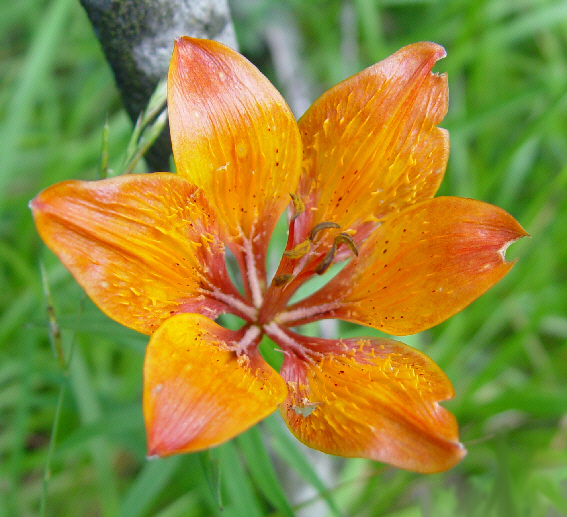Esculent (edible) Inflorescence (flowers)
There are many ways to enjoy a flower.We can gaze at the bloom, taking in the color, contrast and shape of the petals as they create a lovely composition. Holding one up to our noses for a quick sniff is a fabulous way to trigger the release of pleasurable endorphins in our brain. Rubbing soft petals between our fingers or up against a cheek is sure to bring smiles and calming thoughts.
Probably the most intimate approach is to pop a flower directly into our mouth and savor the flavor of the bloom.
 |
| |Date=2006 |Author=Mag. Dr. Markus |
When gathering edible flowers, beware of pesticides and poison flowers and plants. If you are unsure if a flower has been sprayed: don't eat it! If you are not 100% sure of the plant identification: don't eat it! Failure to know what you are eating and if it has been sprayed can cause sickness and death.
Edible flowers behave like produce: there is a premium time to harvest for maximum flavor. Taste a few blooms before harvesting to test for good taste. By all means, if it doesn't take good, leave it for looking, smelling or touching instead of eating!!
Here is a diagram of a flower with the various parts labeled.
As a general rule, when you harvest flowers for eating, keep the flowers cool. If the flower has a long stem, place the flower stem immediately in water after cutting. This will help keep the bloom longer and the flower tastier. Prior to eating, remove the pollen by removing the pistils and stamens of the flowers. People are allergic to pollen so it makes sense to remove it from your prepared meal! Remove the sepals of all flowers except Johnny Jump Ups and Pansies. Only eat the petals of calendula, chrysanthemum, lavender and rose.
 |
| I, Daniel J. Layton |
In our area, gardens frequently contain plants with edible flowers. Here's a partial list of flowers (verses herbs and shrubs) that made me smile. You see, I have many of these in my garden and now can look forward to adding another avenue of bloom enjoyment!!
Bachelor's Button (Centaurea cyanus)
Borage (Borago officinalis)
Calendula (Calendula officinalis)
Chives (Allium schoeonoprasum)
Dianthus (Dianthus spp. - sweet williams, pinks, carnations)
 |
| Density, 2004 Wikipedia |
Lavender (Lavendula spp.)
Marigold (Tagetes patula)
Mint (Mentha spp)
Nasturtium (Tropaeolum majus)
Pansy (Viola x wittrockiana)
Scented Geraniums (Pelargonium spp.)
Violet (Viola odorata)
Note this is a partial list: I can find these in my garden so I listed them. :) There are many more including herbs and some trees and shrubs!
A comprehensive source for learning about edible flowers, complete with listings can be found at North Carolina State University's website.
I encourage you to click on the North Carolina State link above and explore. We have five senses ~ why not use all of them in the garden!!!



